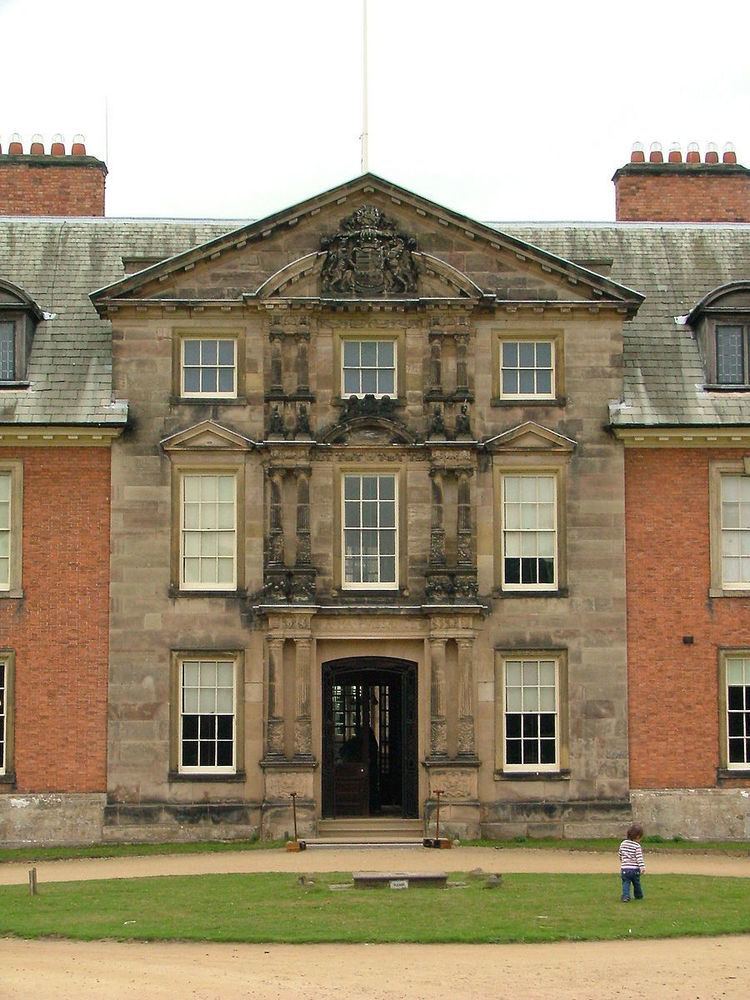Name George 7th | ||
 | ||
George Harry Booth-Grey, 7th Earl of Stamford and 3rd Earl of Warrington (7 January 1827 – 2 January 1883) was an English cricketer, landowner and peer, who sat on the Whig benches in the House of Lords.
Contents
Early life
George Harry Booth-Grey was born at Enville, Staffordshire, the only son of George Grey (1802–1835), who as Lord Grey of Groby had been summoned by writ to Parliament in 1832. He succeeded to that title (created 1603) as 9th Baron Grey of Groby at the death of his father on 24 October 1835.
He was educated at Eton (1840-43) before going up to Trinity College, Cambridge for one year. On the death of his grandfather George Harry Grey on 26 April 1845, he succeeded to the titles of Earl of Stamford, Earl of Warrington and Baron Delamer of Dunham Massey.
Activities
A member of Marylebone Cricket Club (MCC), Stamford played in eight first-class matches between 1851 and 1858, making 81 first class runs at an average of 7.36, with a highest score of 17, and holding two catches.
A prominent patron of The Turf, he was Master of the Quorn Hunt between 1856 and 1863, and whilst he did not have many notable successes with his racehorses, his colt Diophantus won the Two Thousand Guineas in 1861.
He served as a Captain in the Cheshire Yeomanry (1845-56), before being appointed Honorary Colonel of the 7th Battalion, Lancashire Rifles (Volunteers) in 1871.
Marriage and legacy
Lord Stamford and Warrington married twice, producing no children; firstly in 1848 to Elizabeth Billage (daughter of his servant at Cambridge) and secondly in 1855 to Catherine Cox (a circus bareback rider).
After inheriting his family's large estates at Enville in Staffordshire, Bradgate Park in Leicestershire, Dunham Massey in Cheshire and Stalybridge in Lancashire, he commissioned, in 1851, the building of St Margaret's Church, Dunham Massey in honour of his sister, Lady Margaret Milbank. The church was completed in 1855. He was patron of several advowsons in addition to lordships of manors.
In 1856, following his contentious second marriage, he built Bradgate House near Groby. In 1860 twelve farms of his land at Bradgate were submerged to form Cropston Reservoir. In 1879 he donated 16 acres (65,000 m2) of his land at Stalybridge to the local council as a public park (Stamford Park) and sold further land for housing development.
On his death at Bradgate House in 1883, the earldom of Warrington (cr. 1796) became extinct. His other two titles passed to his third cousin once removed who was living in Cape Colony, The Revd Harry Grey, 8th Earl of Stamford.
He left his estates to his widow for life, who was then styled Dowager Countess of Stamford and Warrington, and on her death in 1905 they were divided. The Dunham Massey estate went with the earldom; the Leicestershire estates passed to his niece Mrs Arthur Duncombe (later Grey), and the Enville estate was inherited by the Dowager Countess's grandniece Catherine, wife of Sir Henry Foley Lambert. The land at Stalybridge was left equally between Mrs Duncombe and Lady Lambert, whose descendants (Deramore and Foley Grey respectively) settled its division in 1959.
